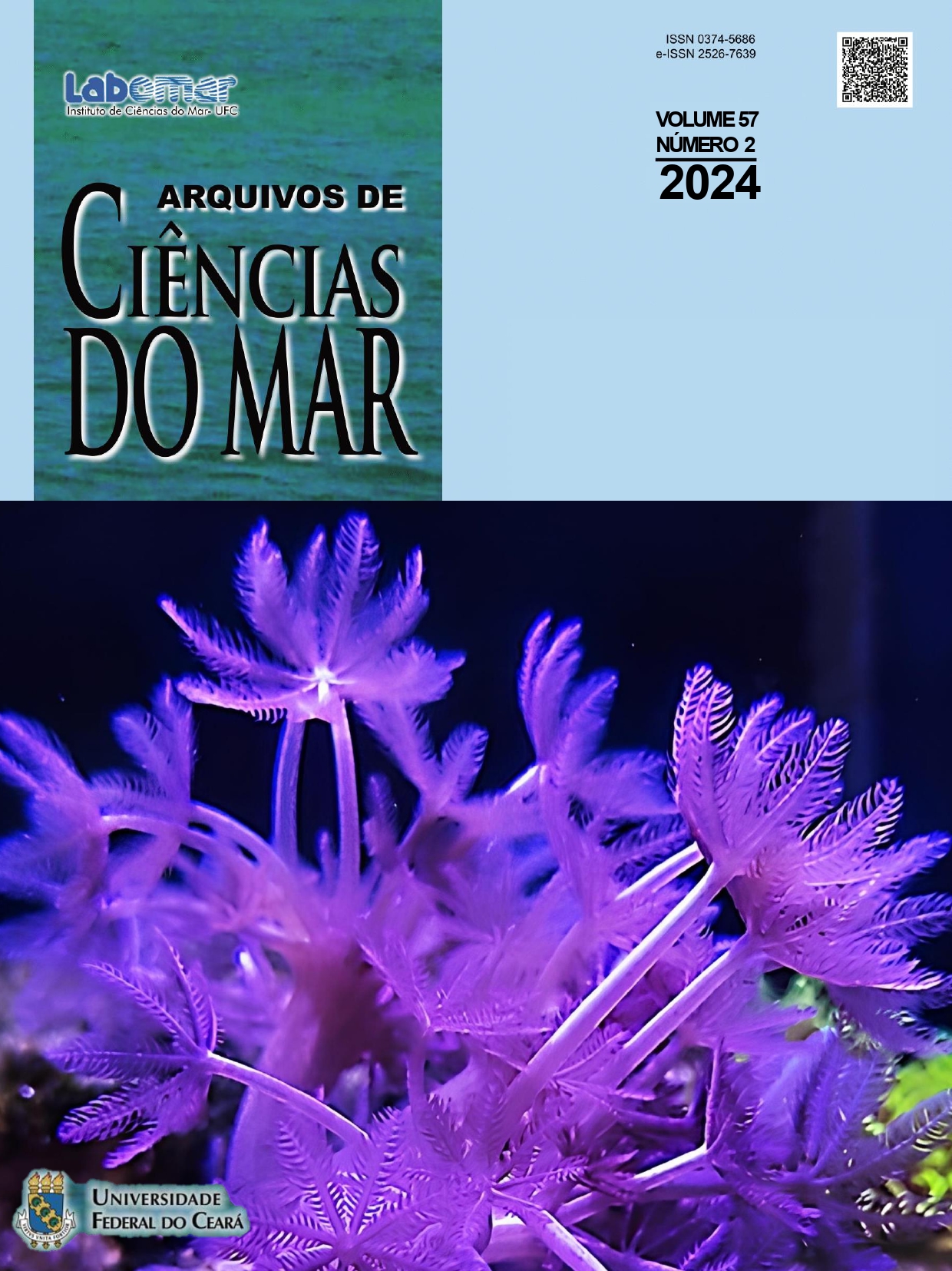UNUSUAL RESPONSES OF GUIANA DOLPHINS (SOTALIA GUIANENSIS) TO THE PRESENCE OF SWIMMERS AND BOATS
Respostas incomuns de botos-cinza (Sotalia guianensis) à presença de nadadores e embarcações
DOI:
https://doi.org/10.32360/acmar.v57i2.92318Resumen
The Guiana dolphin, Sotalia guianensis, classified as 'Vulnerable' to extinction in Brazil, exhibits a particularly small population within Mucuripe embayment, Ceará state, Northeastern Brazil. This study investigated their behavioral responses from October 2019 to May 2021 as part of the environmental licensing requirements for dredging and land reclamation activities. Thirty-two boat surveys were conducted, with dolphins observed in 97% of them. Two 'unusual' responses to the presence of boats and swimmers were noted: a neutral reaction, when a group of five dolphins continued foraging despite nearby swimmers; and a positive response, when three dolphins deliberately approached the research boat, engaging in spy-hopping and sideways swimming, suggesting curiosity towards our presence. These unusual reactions highlight concerns regarding potential human-dolphin interactions in Mucuripe embayment, underscoring the need for continuous systematic monitoring. Such efforts are crucial to provide the appropriate subsidies aimed at preserving natural dolphin behaviors.
Keywords: Cetaceans, marine mammals, endangered species, behavior, interactions, Mucuripe embayment.
Descargas
Publicado
Número
Sección
Licencia
Derechos de autor 2024 Arquivos de Ciências do Mar

Esta obra está bajo una licencia internacional Creative Commons Atribución 4.0.
1. Proposta de Política para Periódicos de Acesso Livre
Autores que publicam nesta revista concordam com os seguintes termos:
- Autores mantém os direitos autorais e concedem à revista o direito de primeira publicação, com o trabalho simultaneamente licenciado sob a Licença Creative Commons Attribution que permite o compartilhamento do trabalho com reconhecimento da autoria e publicação inicial nesta revista.
- Autores têm autorização para assumir contratos adicionais separadamente, para distribuição não-exclusiva da versão do trabalho publicada nesta revista (ex.: publicar em repositório institucional ou como capítulo de livro), com reconhecimento de autoria e publicação inicial nesta revista.
- Autores têm permissão e são estimulados a publicar e distribuir seu trabalho online (ex.: em repositórios institucionais ou na sua página pessoal) a qualquer ponto antes ou durante o processo editorial, já que isso pode gerar alterações produtivas, bem como aumentar o impacto e a citação do trabalho publicado (Veja O Efeito do Acesso Livre).

